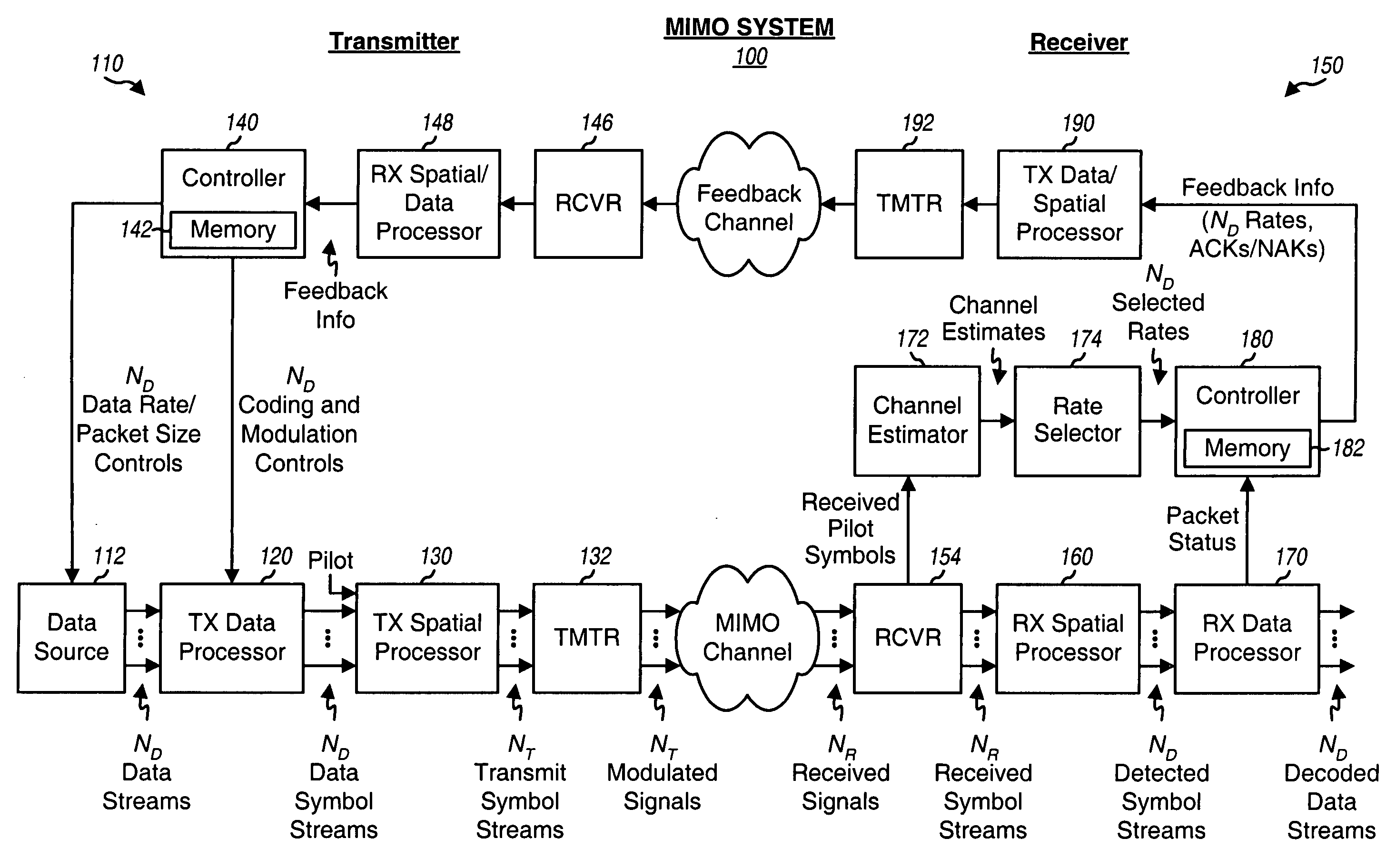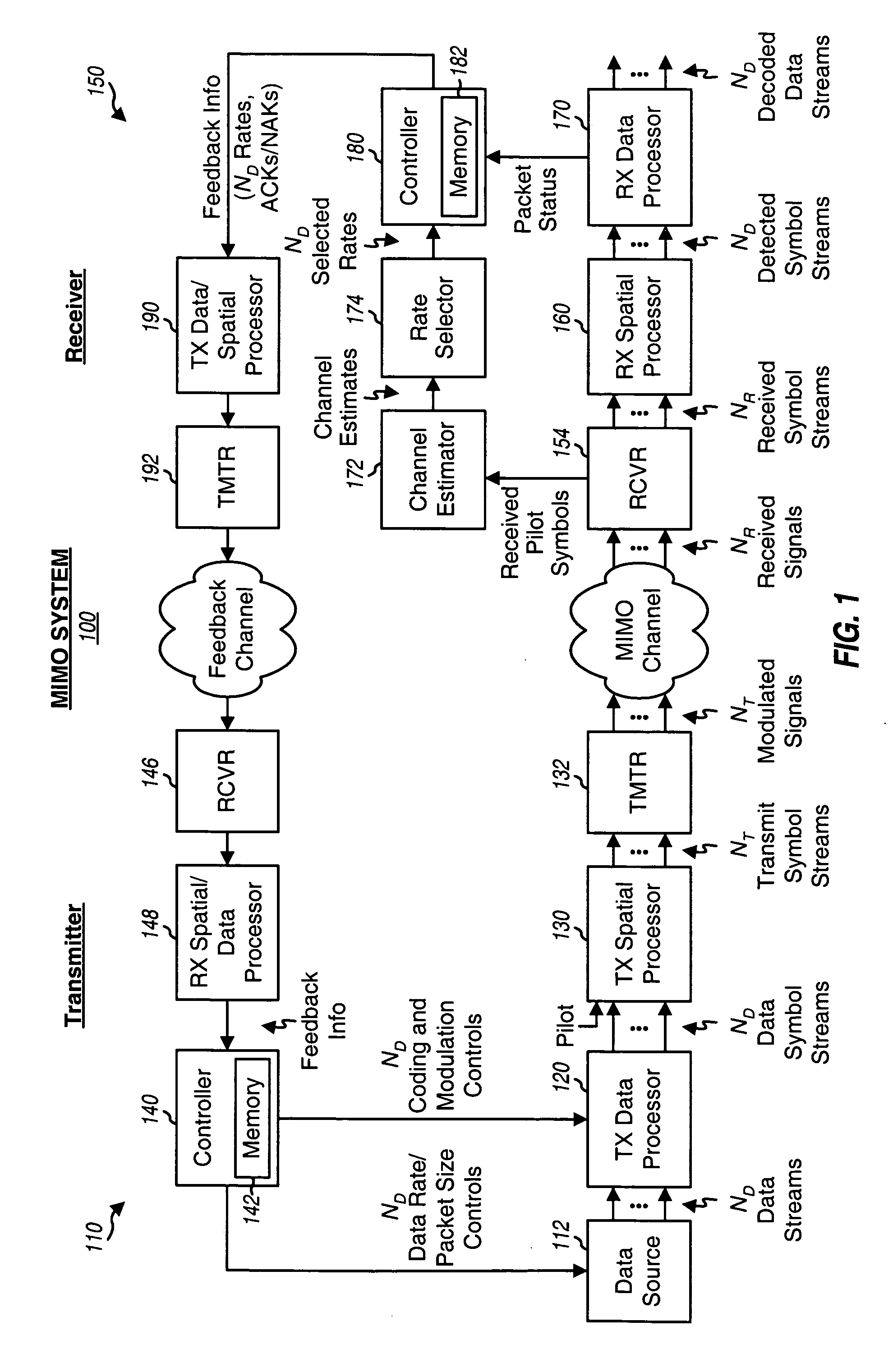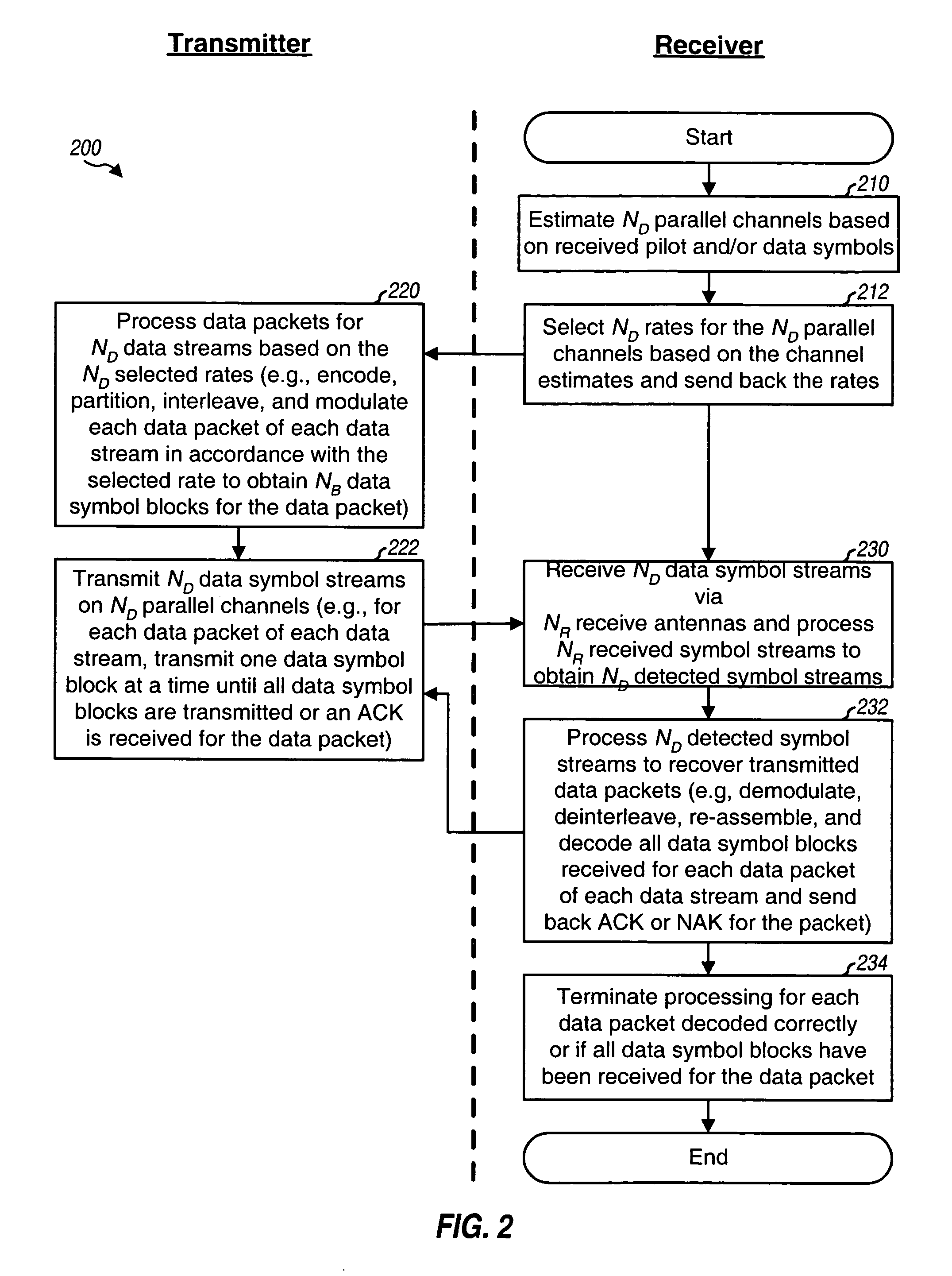Incremental redundancy transmission for multiple parallel channels in a MIMO communication system
a communication system and parallel channel technology, applied in the field of communication, can solve the problems of data packet decoding errors, channel capacity is underutilized, and system resources are expended to transmit data packets, and achieve the effect of higher rates
- Summary
- Abstract
- Description
- Claims
- Application Information
AI Technical Summary
Benefits of technology
Problems solved by technology
Method used
Image
Examples
Embodiment Construction
The word “exemplary” is used herein to mean “serving as an example, instance, or illustration.” Any embodiment or design described herein as “exemplary” is not necessarily to be construed as preferred or advantageous over other embodiments or designs.
For a MIMO system, ND data streams may be transmitted simultaneously on ND parallel channels, one data stream on each parallel channel, where ND>1. Each parallel channel may correspond to a spatial channel or may be formed in some other manner, as described below. Each data stream may be processed independently based on a rate selected for that data stream and transmitted on its parallel channel.
FIG. 1 shows a block diagram of a transmitter 110 and a receiver 150 in a MIMO system 100 that implements IR transmission for multiple data streams on multiple parallel channels. At transmitter 110, a TX data processor 120 receives ND data streams from a data source 112. TX data processor 120 processes (e.g., formats, encodes, partitions, in...
PUM
 Login to View More
Login to View More Abstract
Description
Claims
Application Information
 Login to View More
Login to View More - R&D
- Intellectual Property
- Life Sciences
- Materials
- Tech Scout
- Unparalleled Data Quality
- Higher Quality Content
- 60% Fewer Hallucinations
Browse by: Latest US Patents, China's latest patents, Technical Efficacy Thesaurus, Application Domain, Technology Topic, Popular Technical Reports.
© 2025 PatSnap. All rights reserved.Legal|Privacy policy|Modern Slavery Act Transparency Statement|Sitemap|About US| Contact US: help@patsnap.com



